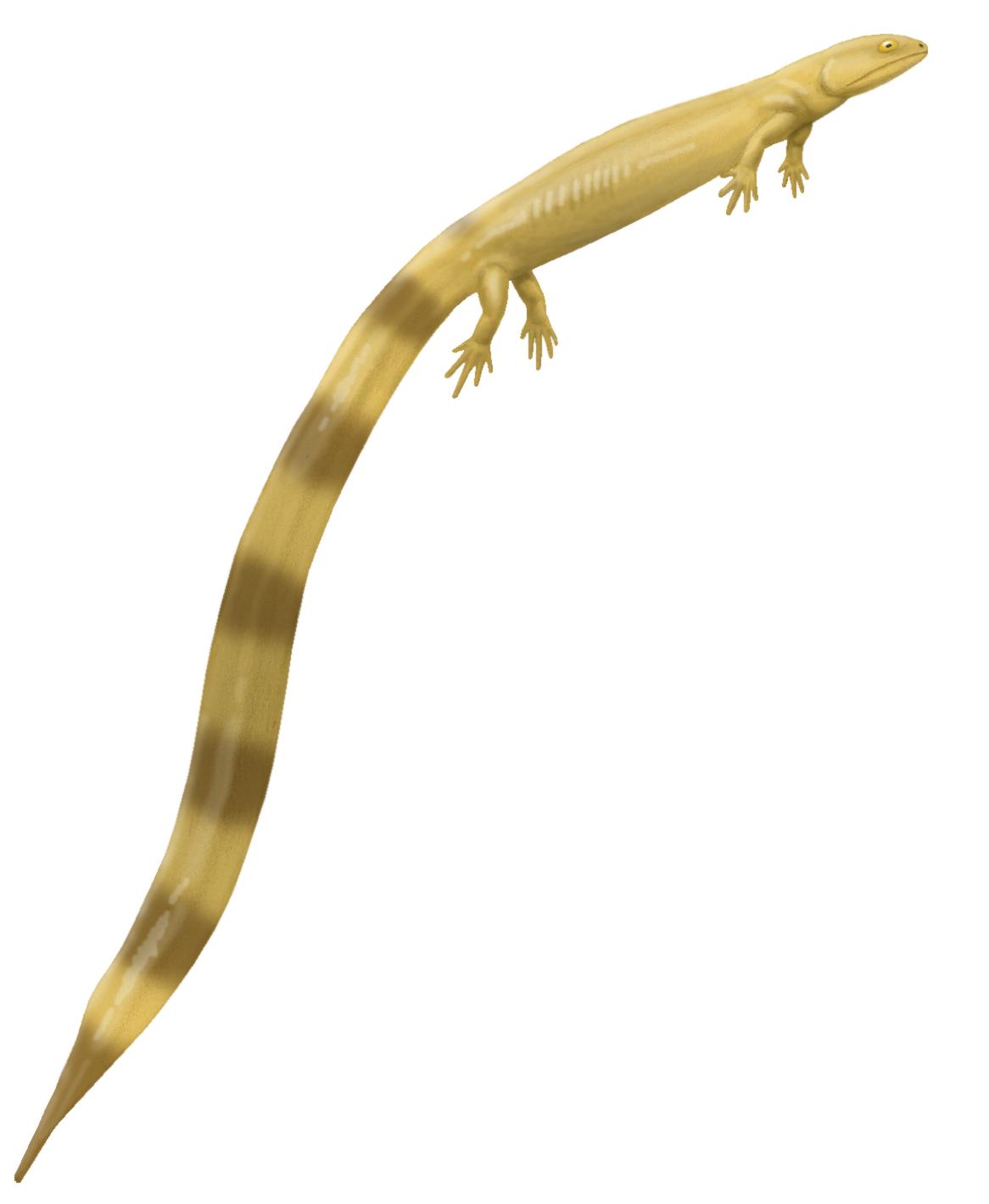Nectridea on:
[Wikipedia]
[Google]
[Amazon]
Nectridea is the name of an extinct order of lepospondyl
 Nectrideans are a diverse group of tetrapods, including the aquatic Urocordylidae, the presumably terrestrial Scincosauridae, and the bizarre horned members of Diplocaulidae (also known as Keraterpetonidae), which includes the "boomerang-headed" ''Diplocaulus'', one of the most famous genera of prehistoric amphibians (in the traditional sense of the word). By the time the earliest known nectrideans appeared in the Late Carboniferous fossil record, they had already diversified into these families, indicating that basal nectrideans are unknown. These different families are united primarily by features of the
Nectrideans are a diverse group of tetrapods, including the aquatic Urocordylidae, the presumably terrestrial Scincosauridae, and the bizarre horned members of Diplocaulidae (also known as Keraterpetonidae), which includes the "boomerang-headed" ''Diplocaulus'', one of the most famous genera of prehistoric amphibians (in the traditional sense of the word). By the time the earliest known nectrideans appeared in the Late Carboniferous fossil record, they had already diversified into these families, indicating that basal nectrideans are unknown. These different families are united primarily by features of the
tetrapod
Tetrapods (; ) are four-limb (anatomy), limbed vertebrate animals constituting the superclass Tetrapoda (). It includes extant taxon, extant and extinct amphibians, sauropsids (reptiles, including dinosaurs and therefore birds) and synapsids (p ...
s from the Carboniferous and Permian
The Permian ( ) is a geologic period and stratigraphic system which spans 47 million years from the end of the Carboniferous Period million years ago (Mya), to the beginning of the Triassic Period 251.9 Mya. It is the last period of the Pale ...
periods, including animals such as '' Diplocaulus''. In appearance, they would have resembled modern newt
A newt is a salamander in the subfamily Pleurodelinae. The terrestrial juvenile phase is called an eft. Unlike other members of the family Salamandridae, newts are semiaquatic, alternating between aquatic and terrestrial habitats. Not all aqua ...
s or aquatic salamander
Salamanders are a group of amphibians typically characterized by their lizard-like appearance, with slender bodies, blunt snouts, short limbs projecting at right angles to the body, and the presence of a tail in both larvae and adults. All ten ...
s, although they are not close relatives of modern amphibians. They were characterized by long, flattened tails to aid in swimming, as well as numerous features of the vertebrae.
Description
 Nectrideans are a diverse group of tetrapods, including the aquatic Urocordylidae, the presumably terrestrial Scincosauridae, and the bizarre horned members of Diplocaulidae (also known as Keraterpetonidae), which includes the "boomerang-headed" ''Diplocaulus'', one of the most famous genera of prehistoric amphibians (in the traditional sense of the word). By the time the earliest known nectrideans appeared in the Late Carboniferous fossil record, they had already diversified into these families, indicating that basal nectrideans are unknown. These different families are united primarily by features of the
Nectrideans are a diverse group of tetrapods, including the aquatic Urocordylidae, the presumably terrestrial Scincosauridae, and the bizarre horned members of Diplocaulidae (also known as Keraterpetonidae), which includes the "boomerang-headed" ''Diplocaulus'', one of the most famous genera of prehistoric amphibians (in the traditional sense of the word). By the time the earliest known nectrideans appeared in the Late Carboniferous fossil record, they had already diversified into these families, indicating that basal nectrideans are unknown. These different families are united primarily by features of the spinal column
The vertebral column, also known as the backbone or spine, is part of the axial skeleton. The vertebral column is the defining characteristic of a vertebrate in which the notochord (a flexible rod of uniform composition) found in all chordat ...
rather than the skull.
Vertebrae
In many groups of early tetrap